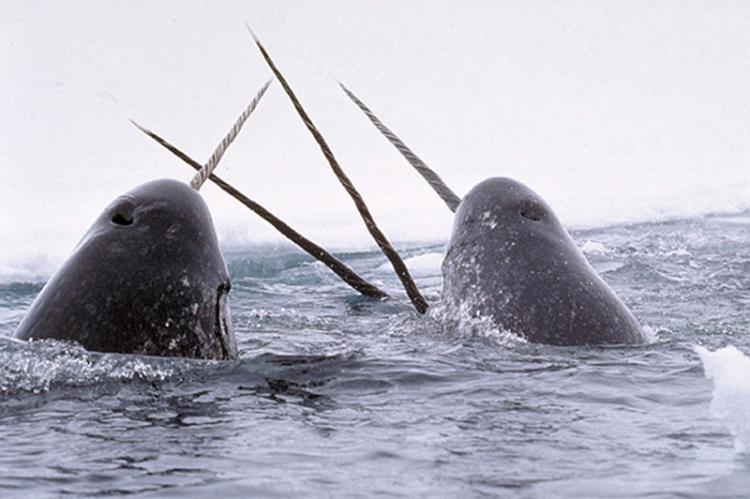New study reveals narwhal tusks are highly sensitive
Tusk revealed to be sensitive to temperature and chemical differences in external environment
Renowned for their tusks that can reach 2.6m in length, narwhals induce comparisons with mythological unicorns. In reality, the tusk is an exaggerated front tooth and scientists have discovered it helps the whales sense changes in their environment.
With results are published in the journal The Anatomical Record, the study was undertaken by Dr Martin Nweeia from the Harvard School of Dental Medicine alongside an international team of colleagues. Over the years, many theories have attempted to explain the tusk’s function. “People have said it's everything from an ice pick to an acoustic probe, but this is the first time that someone has discovered sensory function and has the science to show it," said Dr Nweeia.
Previous studies revealed the tusks have no enamel, the tooth’s external layer that provides a barrier in most mammal teeth. The team’s analysis revealed the outer cementum layer of the tusk is porous and the inner dentin layer has microscopic tubes that channel in towards the centre. In the middle of the tusk lies the pulp, where nerve endings connecting to the narwhal's brain are located.” Although it's a rigid tooth, it has a very permeable membrane," said Dr Nweeia.
He explained that because of this structure, the tusk is sensitive to temperature and chemical differences in the external environment. This link was proven when the tusk was exposed to different salt levels in the water resulting in a corresponding change in the narwhal's heart rate.
He described the tusk as "unique" in the animal kingdom because its porous outer layer is usually only found below the gum line in mammals, where it is only exposed by damage or disease.” The narwhal is the only example documented where teeth are shown to have the ability to constantly sense environmental stimuli that would not necessarily be considered a threat,” said Dr Nweeia. "If you were looking for an ideal and fascinating tooth to study there's no question this would be it."
Dr Nweeia is fascinated by the fact that narwhals put all their tooth-growing energy into a single tusk rather than having a set of teeth to help them eat their diet of large fish, such as halibut. He suggests the tusk’s sensory ability might have advantages for males as they could use it to detect where females are, whether they are ready to mate, or how to find food for newborn calves.
It remains unclear whether the animals have evolved the tusk's sense functions or whether it is an evolutionary throwback. “We’re just looking at one time frame in evolutionary history," said Dr Nweeia. "We don't know if this is a sensory organ that is gaining more function, or is this a sensory function that is losing some of its ability?"
Research is now focusing on traditional knowledge, asking hunters in the high Arctic for their observations in the hope that more information can unravel the mystery of the narwhal's tusk.





























